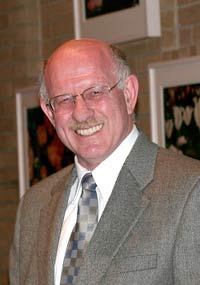
Handy Links
SLAC News Center
SLAC Today
- Subscribe
- Archives: Feb 2006-May 20, 2011
- Archives: May 23, 2011 and later
- Submit Feedback or Story Ideas
- About SLAC Today
SLAC News
Lab News
- Interactions
- Lightsources.org
- ILC NewsLine
- Int'l Science Grid This Week
- Fermilab Today
- Berkeley Lab News
- @brookhaven TODAY
- DOE Pulse
- CERN Courier
- DESY inForm
- US / LHC
SLAC Links
- Emergency
- Safety
- Policy Repository
- Site Entry Form

- Site Maps
- M & O Review
- Computing Status & Calendar
- SLAC Colloquium
- SLACspeak
- SLACspace
- SLAC Logo
- Café Menu
- Flea Market
- Web E-mail
- Marguerite Shuttle
- Discount Commuter Passes
-
Award Reporting Form
- SPIRES
- SciDoc
- Activity Groups
- Library
Stanford
Around the Bay
Dorfan Today
 I am now back from the ICHEP conference in Moscow where results from SLAC's high energy physics research made a leading contribution. Throughout my travels I kept a close eye on the performance of the B-Factory from various hotel and conference rooms, and I was delighted to see that PEP-II achieved several major milestones in the past few days. The best seven-day integrated luminosity reached 5385 inverse picobarns (pb-1). This performance has increased over 20% in the past year. Secondly, the total integrated luminosity delivered by PEP-II to BaBar has now exceeded 400 inverse femto-barns (fb-1). Congratulations to the dedicated support staff spread over the Particle and Particle Astrophysics (PPA) and Operations Directorates whose hard work and skill made these achievements possible.
I am now back from the ICHEP conference in Moscow where results from SLAC's high energy physics research made a leading contribution. Throughout my travels I kept a close eye on the performance of the B-Factory from various hotel and conference rooms, and I was delighted to see that PEP-II achieved several major milestones in the past few days. The best seven-day integrated luminosity reached 5385 inverse picobarns (pb-1). This performance has increased over 20% in the past year. Secondly, the total integrated luminosity delivered by PEP-II to BaBar has now exceeded 400 inverse femto-barns (fb-1). Congratulations to the dedicated support staff spread over the Particle and Particle Astrophysics (PPA) and Operations Directorates whose hard work and skill made these achievements possible.
The end of data taking for Run 5 on August 21 will usher in a whole new set of challenges for BaBar and PEP-II. In a carefully choreographed ballet, involving up to 11 shifts per week and spanning the four months until operations resume in early January 2007, BaBar will complete the replacement of the resistive-plate chambers (RPCs) of the barrel muon system with limited-streamer tubes (LST). The first one-third of the new system was installed in Summer 2004 and has performed flawlessly since then, delivering outstanding efficiency for muon detection. Physicists, engineers, and technicians from both SLAC and collaborating BaBar institutions will be working throughout the shutdown to complete the replacement, a task that will greatly benefit from the past year's meticulous planning and preparation.
Just as for BaBar, the four month down will also be a time of major activity around the PEP-II complex, all aimed at doubling the peak luminosity for the B-Factory during the upcoming Run 6. Two new RF (radio frequency) stations will be installed for the High Energy Ring (HER) to increase the beam current and most of the vacuum chambers near the interaction region will be replaced with chambers designed to handle these higher beam currents. Much of the beam-position instrumentation distributed around the 2.2 km length of the low-energy ring will also be replaced.
These activities will position the PEP-II/Babar complex for yet new performance and physics heights in the years 2007-2008.
—Jonathan Dorfan, August 7, 2006